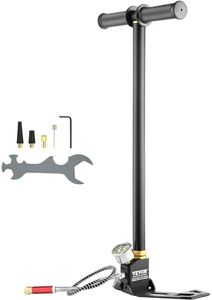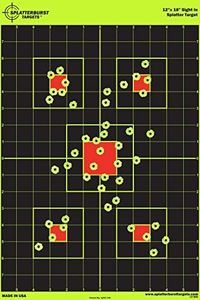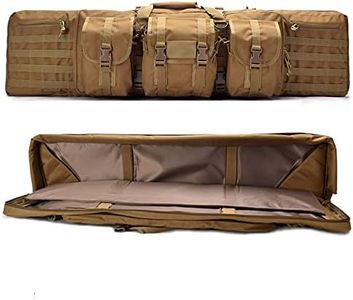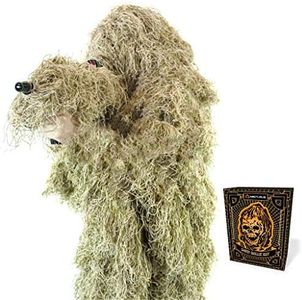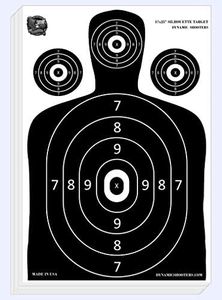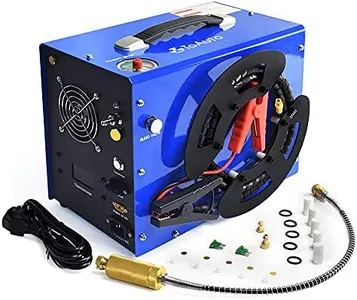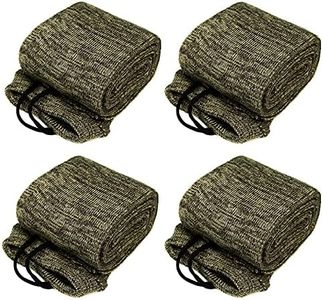We Use CookiesWe use cookies to enhance the security, performance,
functionality and for analytical and promotional activities. By continuing to browse this site you
are agreeing to our privacy policy
10 Best Air Rifle For Adults
From leading brands and best sellers available on the web.Buying Guide for the Best Air Rifle For Adults
Choosing the right air rifle can be a satisfying process when you understand what features and specifications will suit your intended use, whether it’s target shooting, small game hunting, or just recreational plinking. Take time to reflect on why you want an air rifle, how often you’ll use it, and in what environments. By matching your needs to key specifications, you’ll end up with a product that feels just right.CaliberThe caliber of an air rifle refers to the size of the pellet it uses, usually measured in inches or millimeters (like .177 or .22). This is important because caliber affects things like accuracy, power, and the kinds of tasks the rifle is suited for. Lower calibers, such as .177, are often chosen for target shooting due to their flatter trajectory and higher speeds, while .22 is more common for hunting due to its better knockdown power. Think about what you’ll use the rifle for: for paper targets or competitions, a smaller caliber makes sense; for pest control or small game hunting, a larger caliber will be more effective.
Power SourceAir rifles are powered in several ways, such as spring-piston, gas piston, pre-charged pneumatic (PCP), or CO2. The power source affects the rifle’s power, ease of use, and maintenance. Spring-piston rifles are durable and do not require external tanks, but can be heavier to cock. Gas piston models offer smoother shooting and perform better in cold weather. PCP rifles give greater consistency and power, but need to be refilled with air using a pump or tank. CO2 rifles are simpler to operate, but CO2 can be less consistent in cold weather. Consider how involved you want the process to be and what kind of shooting you’ll do most often; pick a power source that matches your comfort and the settings where you’ll be shooting.
VelocityVelocity, measured in feet per second (FPS), indicates how fast a pellet leaves the barrel. Higher velocity can mean flatter trajectory and increased range, but too much speed can also affect accuracy if the pellet becomes unstable. Low to moderate velocities (600-900 FPS) are ideal for target shooting and casual plinking as they offer manageable power and good control. Higher velocities (over 1000 FPS) may be better for hunting small game, but can make the rifle louder or harder to shoot accurately. Think about your use: for accuracy at typical backyard distances, you don’t need extreme velocity; for hunting, extra power might help.
Action TypeAction type refers to how the rifle is loaded and prepared to fire, such as break-barrel, side lever, underlever, or bolt-action (common in PCP or CO2 models). Each has pros and cons. Break-barrels are straightforward and easy for beginners, while underlever and side lever actions often allow for more consistent accuracy. Bolt or multi-shot actions, often found on PCP guns, are convenient for quick follow-up shots. Picking an action type is about balancing ease of use with your shooting habits; if you expect to shoot many pellets in a session, a multi-shot PCP or CO2 action may be ideal, while single-shot break-barrels are classic and reliable.
Weight and ErgonomicsThe weight and overall feel of an air rifle greatly affect comfort, especially during longer shooting sessions or if you plan to move around a lot. Heavier rifles can absorb recoil better and provide steadier aim, but may be tiring to carry or hold for long periods. Lighter rifles are more portable and easier to handle, especially for smaller or less experienced shooters. Think about how and where you intend to use the air rifle—if you'll be stationary, weight may not matter much, but if you'll be stalking game or shooting outdoors for hours, a lighter model may fit you better. Also, look for a stock design and grip that feels natural in your hands.
Noise LevelThe amount of noise an air rifle makes varies widely and can be important if you’re shooting in suburban areas or don’t want to disturb neighbors. Quieter rifles may use integrated suppressors or lower-powered systems to keep noise down, while high-velocity rifles tend to be louder. If discretion is important or you’ll be practicing in a backyard, look for models specifically marketed as quiet or with sound-dampening features.
Sights and Optics CompatibilityAir rifles come with different types of iron sights, or may be designed to accept scopes for easier aiming. Your preference depends on your eyesight, shooting distances, and style. Iron sights are adequate for close-range or certain competitions, but if you plan on shooting at farther distances or hunting, make sure the rifle has mounting rails or compatibility for scopes. Assess your vision and shooting needs: if hitting small targets far away is your goal, optics compatibility is a must.
